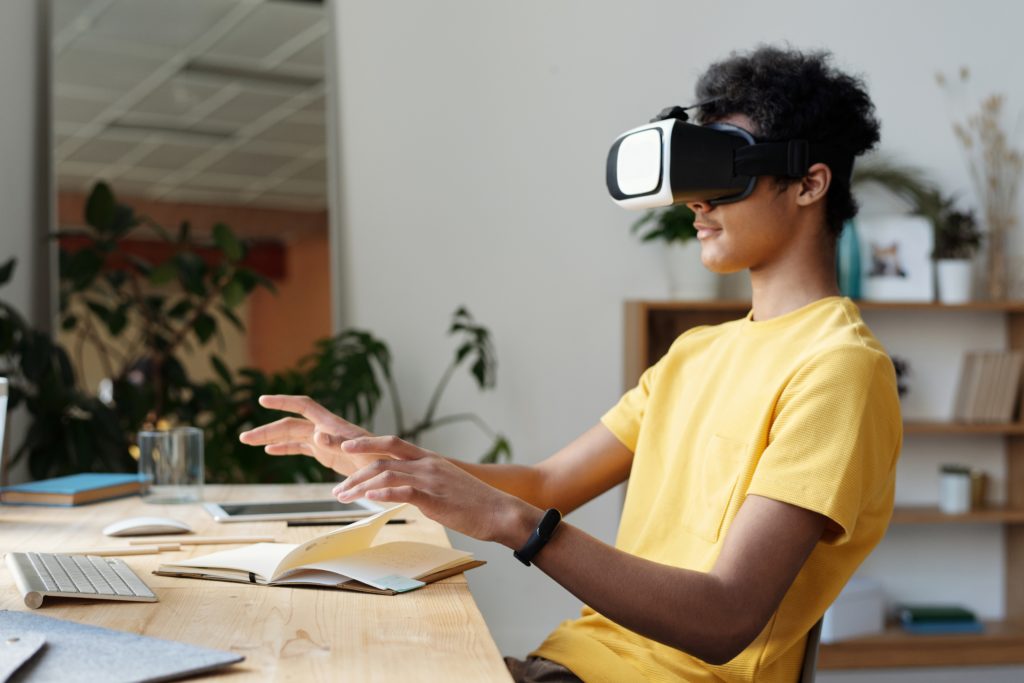
The COVID19 pandemic might have been declared over by the United States’ biggest health authority, but its effect will stay for us long after that. This is especially true when it comes to the use of virtuality in areas like learning, events, marketing, branding, and many more.
For companies, this means that adapting their branding strategies is a must if they want to survive the changing landscape.
When it comes to branding, events like conferences and festivals have always represented one of the biggest opportunities for companies around the world. During the pandemic, we learned of the many benefits that virtual events can bring over in-person events. These benefits suggest that a shift toward virtuality is inevitable, with hybrid events being expected to become the norm over the next few years.
While virtual events have already seen an enormous number of tools emerge to support them, their increasing relevance is likely to sustain this trend. New technologies like the metaverse mean that new scenarios can be used to support them, bringing the real and virtual worlds together.
As both environments differ in a lot of ways, both positive and negative, understanding both is key. Cost-efficiency, design focus, brand activation, reach, attention span, and many other factors have to be considered. Striking the perfect balance between representing your brand in a virtual and real environment is essential.
Branding in virtual environments has proven to be challenging, especially as both organizations and consumers are still learning to navigate them. However, these challenges also represent a unique opportunity for innovation and branding improvement.
By identifying and creating trends early, you will be able to maximize the branding opportunities for your company, gaining a competitive advantage. Let’s talk about how to do that.
Virtual branding certainly is different in many ways from in-person branding but not completely. As such, keeping the basics of in-person branding in mind is essential to maximize the benefits of your virtual branding efforts.
Some of these basics include:
There are many other elements to branding which need to be considered. What is important is that you don’t assume that you can slack when it comes to the fundamentals because of the “informality” of the virtual space.

The virtual environment brings the idea of video conferencing, chat, social media, and other applications of technology for remote communication. However, there are many more technologies being developed every day that can be used for branding purposes in virtual events.
The metaverse, QRs, NFTs, and smart devices are only some of the tools that can help brands better transmit their messages. Of these technologies, the one that is making the most noise these days is the metaverse, which has allowed bands like DeadMau5 to organize virtual concerts or organizations like IOHK to run virtual summits.
By using technologies like zoom, chatbots, and self-service options to create new means of communication with your audience. If you are running an event, for example, combining these tools with a QR represents a great branding opportunity.
Virtuality brings many tools that allow for a more customizable experience. Avatars, customized backgrounds, digital assets, and many more such tools can share a message passively.
Make sure to bring those customization options to your audience. For example, if you are looking to have them share their experience on social media… Why not create a personalized filter or similar?
If a member of your team is giving a presentation via a live stream, why not use a filter to represent your brand while he does so?
Most organizations these days don’t operate entirely in the virtual realm, which means they need to interact with their audience in person. With virtual environments often being highly saturated, making it as easy as possible for your audience to connect out of the virtual environment should be a priority.
While this sounds simple enough, the truth is that doing this effectively is not that easy. In an online event or environment, people will be more interested in exploring and interacting with the different scenarios than in visiting a website to fill out a form. The more engaging the user is using at the time, the harder it will be to keep their attention in the traditional way.
This leaves you with 2 options: The first one is to find an innovative way to rely on information that ensures they will interact with your brand once they leave the virtual environment. The second one is to have them take a quick and easy action that ensures you can grab their attention later on.
In the case of the second option, distinguishing yourself by sending physical souvenirs, hosting side events, offering in-person experiences, and similar techniques are great ways for your brand to stand out.

TikTok, Facebook, Instagram, Linkedin, and Twitter can all be used to maximize the effectiveness of the previous tips while also improving interaction. Using social media to have your virtual branding efforts extend organically beyond the initial effort is not only cost-effective but also effective.
Many companies have shown the potential of social media as a branding opportunity but one of our favorites gotta be Wendy’s.
By using Twitter in a way that feels relatable and natural to young people, the fast-food chain has made a name for itself as the “cool kid” of the fast-food industry. Just search for “Wendy’s tweets” in your favorite search engine and you will see one of the best examples of virtual branding.
Something that you should certainly keep in mind is that finding your own voice is essential. Take the case of Wendy’s as an example: many have tried to copy it and have failed.
Branding in the virtual environment might often seem like an extremely difficult task. While it is true that there are challenges that come with it, the benefits greatly outweigh the drawbacks.
In order to successfully represent your brand in virtuality, you must always remember that no company truly knows what the “right” formula is, as this depends on a variety of factors. However, we at Performedia have specialized in developing virtual and hybrid event experiences over the past years. No matter whether you have a concrete idea in mind or not, we can help you organize an event that truly represents your brand and leaves a mark.
The virtual space is a place for exploration, creativity, teamwork, and resourcefulness. As long as you don’t forget the fundamentals of branding and come up with strategies that are coherent with your identity, you are sure to succeed!